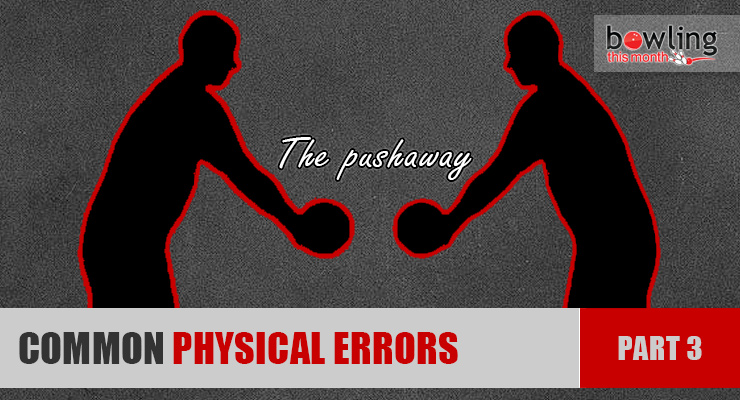Article Contents
- 1. The successful pushaway
- 1.1. It must help create good timing
- 1.2. The hand position must be good
- 1.3. The direction of the pushaway must create a good swing plane
- 2. Getting started
- 3. Drills, drills, drills
- 3.1. The “get it going” drill (to correct later timing)
- 3.2. The “place it here” drill (to correct direction)
- 3.3. The “catch/drop” drill (to correct carrying the ball)
- 3.4. The “orb” drill (to correct hand/wrist position)
- 4. But I’m not strong enough…
Note: This article is only available to Bowling This Month subscribers.
The pushaway is more often referred to as the “ball start” in modern coaching, but for the sake of consistency in this article, I’ll simply use pushaway.
It really isn’t a very complicated movement, but it is vital to achieving proper technique. In reality, the difficulty of the pushaway lies more in the timing of it, and in making a correction if the direction is off. It is consistently one of the hardest things for people to change when they’ve already built up some muscle memory; that just means you need to be more committed to the process of changing it.
The successful pushaway
For a pushaway to be considered a success, a few things have to happen.
It must help create good timing
Timing is the synchronization of the armswing and footwork in order to achieve leverage through the release point. Improper timing results in a loss of balance and leverage which will ruin accuracy, rev rate, and consistency. The pushaway is vital to achieving good timing, and as a result, it should be one of the places you look at fixing if your timing is too early or late.
The hand position must be good
If the first thing you do when you start moving the ball is lose your hand position, the pushaway is a bad one. Many bowlers start with the wrist in a strong position, only to lose that position as soon as they start their swing. The pushaway is only good if you ...
Already a premium member? Click here to log in.


 (Only
(Only 